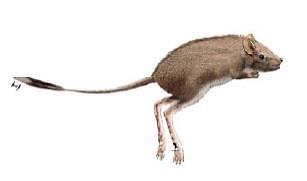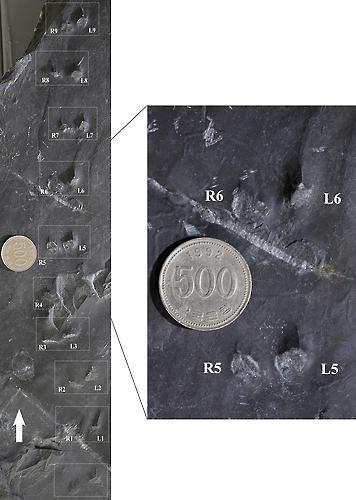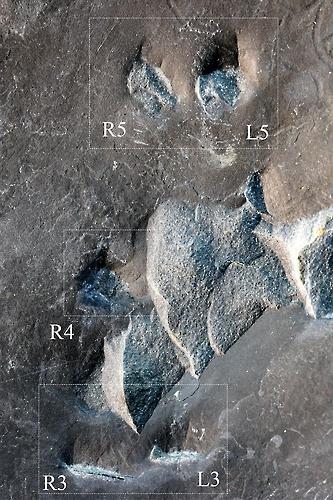
[Courtesy of The Cultural Heritage Administration]
An 110 million-year-old footprint fossil of a small and hopping kangaroo-like mammal has been found in South Korea. It was the first of its kind from the Cretaceous period of the Mesozoic Era.
The fossil containing nine pairs of footprints was discovered in Jinju some 280 kilometers (173 miles) south of Seoul by a Chinju National University team led by professor Lim Jong-deock, according to the Cultural Heritage Administration, a state body.
The fossil was analyzed jointly by scientists from the United States, South Korea and China to substantiate Lim's finding. Their research paper was published in the February 7 issue of "Cretaceous Research", a bimonthly research journal.

[Courtesy of The Cultural Heritage Administration]
The research team said it is confident, judging from the shape of the footprints left in the fossil, their maker was definitely a mammal. The kangaroo-like jumper is named "Koreasaltipes Jinjuensis".
The 32.1-centimeter-long fossil, found in a stratum formed about 110 million years ago, showed the footprints of a small hopping mammal with a foot breadth of 2.1 centimeters. The hopper's average stride is about 4.1 centimeters. Only two footprints were left by the small hopper and it indicates that it is bipedal.
"The Koreasaltipes Jinjuensis is about 10 centimeters tall, similar to kangaroo rats found in desert areas," said Lim. "It had a pair of very strong legs."

[Courtesy of The Cultural Heritage Administration]
So far, footprint fossils made by small hopping mammals were found only in Argentina and the United States. Ameghinichnus, found in Argentina, is speculated to have lived in the Jurassic period (210-145 million years ago). Musaltipes, discovered in a US stratum, is predicted to have lived in the Miocene era (23 million years ago).
There's is a distinctive difference between Koreasaltipes Jinjuensis and the hoppers found outside the Korean peninsulas, Lim said. "The way the Jinjuensis walk, how its toe stretches out, and most importantly, patterns made by its hopping, are clearly different."
The state administration said the footprint fossil would be shown to the public in the latter half of this year.
Park Sae-jin = swatchsjp@ajunews.com


